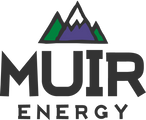A Sports Dietitian's Top 5 Nutrition Tips for Training Runs
Mar 21, 2022
On a recent “Ask Me Anything” on Instagram, we received numerous questions on how to fuel for training. Lauren MacLeod, MUIR content editor and mountain sports dietitian, dives deeper into the answers.
Runners have their own unique nutrition needs. In this article we’ll cut through the noise, debunk nutrition myths, and get specific about what you can do to enhance training, increase energy, and optimize recovery when you’re out on the trails.

1. Eat a high carbohydrate snack 30 minutes to 1 hour before training
Before a long training run, it’s necessary to find balance between nourishing yourself and preventing digestive discomfort. Try to choose snacks that are low in fat and fiber and moderate in protein. These nutrients slow down digestion and may increase gastrointestinal (GI) distress.
Some options include:
- MUIR fast burning gels
- Fruit smoothie made with apple or orange juice
- Fruit and granola bar
- Toast with peanut butter and banana
- Dried fruit on its own
- Sports drink or juice

2. Eat an easy-to-digest snack every hour on the hour
If you train for longer than one hour, eat an easy-to-digest snack every hour on the hour. Pre-fueling ensures your muscles have a continuous supply of energy to keep you going. See the above examples of pre-training snacks for more ideas.
For runs that pass the two hour mark, it’s important to start thinking about protein and fats too. Protein begins the process of muscle recovery, while fats are the most dense source of calories. Ultra running burns incredible amounts of calories, and it can be tough to get enough from carbs alone. Consider adding in:
- MUIR slow burning gels
- Peanut butter + fruit or jelly sandwich
- Trail mix
- Nut butter packets
Along the same lines, I do not recommend running fasted unless you’re training for less than one hour. Staying well-nourished is the key to training effectively.
3. Remember protein AND carbs for recovery
About 1-2 hours after a run, make a meal or snack that contains carbohydrates and protein. These two nutrients need to work together to build muscle and replenish energy storage – that protein powder won’t do the trick on its own. Need an idea for what to eat after training? Check out my recovery smoothie recipe below.

4. To help fight inflammation, include fats with meals
Some level of inflammation is normal after exercise, but too much can impact your ability to recover and rest up for your next training session. Choosing unsaturated fats and omega-3 fatty acids can help with both modulating inflammation and keeping blood sugar balanced so you don’t crash between training sessions.
Recommended fat sources for athletes:
- MUIR slow burning gels, which contain nut butter
- Nut-based trail mix
- Avocado
- Plant-based oil (canola, olive, avocado, sunflower seed, sesame)
- Fatty fish (salmon, tuna, pollock, catfish)

5. Hydrate
Staying hydrated while running is a constant struggle. Make sure you consistently drink enough water, not just during training but throughout the day. Some symptoms of dehydration (that don’t include thirst) are trouble focusing, fatigue, and dizziness. You don’t want these issues getting in the way of your training! Try to get about half your weight in ounces of fluid per day.
For example, if you weigh 150 pounds, aim for 75 ounces of water per day.
Other sources of fluids include juice, smoothies, soup, and high-water foods like melons, grapes, and cucumbers.
–
Try these nutrition tips on your next training run!
Bonus: Training Run Recovery Smoothie
This smoothie contains carbohydrates, protein, fats, and fruits to help athletes recover from training, manage inflammation, and balance energy.
- 1 medium banana, frozen
- 1 Ping pong ball-sized scoop of nut butter OR 2 MUIR Cashew Vanilla slow burning gels
- 1 cup milk or milk alternative of choice (soymilk is my personal favorite)
- 2 scoops chocolate protein powder of choice OR 1 cup plain dairy yogurt and a spoonful of cocoa powder
Blend until smooth.


